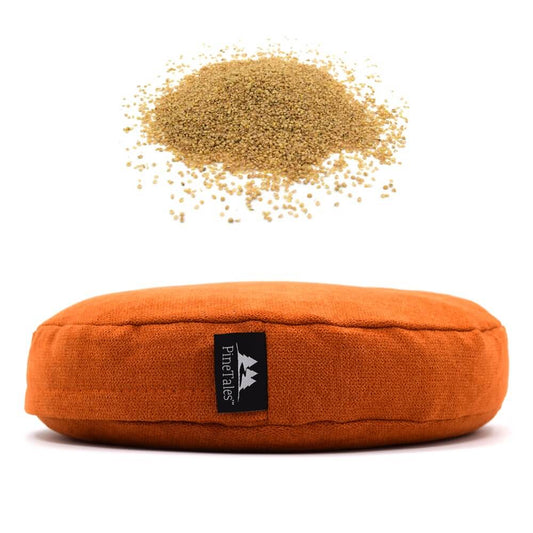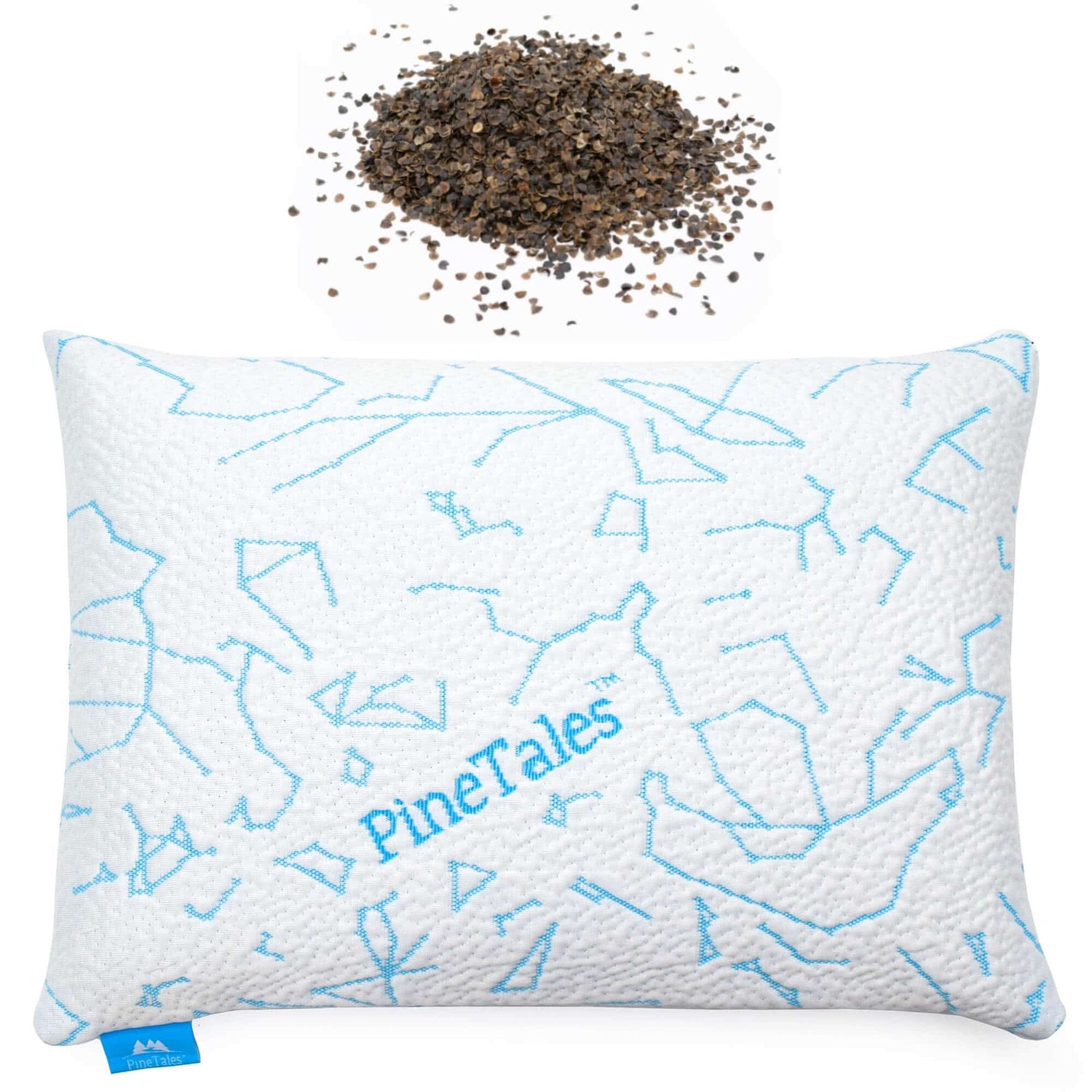Women are at a higher risk for sleep troubles than men. About 12% of women experience disrupted sleep, on average, and this number increases with age. About 40% of women in their late 40s to early 50s experience sleep troubles, which worsens as a result of perimenopause, menopause, and even post-menopause.
Menopause comes with a range of unpleasant symptoms ranging from hot flashes to mood changes to sleep troubles. This is due to the hormonal and physical changes which begin up to 10 years before menopause. During the period of perimenopause, which lasts between 7 to 10 years, ovaries decrease the production of estrogen and progesterone, which can cause sleep issues. As a result, up to 47% of perimenopausal women have difficulty sleeping. Sadly, these sleep difficulties can continue after menopause, with up to 60% of post-menopausal women having difficulty sleeping.
There are several reasons why women experience an increase in sleep troubles when going through these hormonal changes. One of these is hot flashes. Hot flashes are a common menopausal experience, which involve the sudden sensation of heat and sweating. They can last just seconds or as long as 5 minutes and are often unexpected, occurring throughout the entire perimenopausal period. These hot flashes can occur in the night, too, causing night sweats.
During these night sweats, a woman’s temperature will rise quickly, and there will be an increase in blood flow to the face which will wake her up. This is also associated with an increase in adrenaline, making it very difficult to fall back asleep. Although not all women will experience hot flashes, up to 85% will, and those who experience hot flashes are at greater risk for chronic insomnia.
According to Grace Pien, M.D., M.S.C.E., an assistant professor of medicine at the Johns Hopkins Sleep Disorders Center, “There are changes in the brain that lead to the hot flash itself, and those changes – not just the feeling of heat – may also be what triggers the awakening.”
She went on to say, “Even women who don’t report sleep disturbances from hot flashes often say that they just have more trouble sleeping than they did before menopause.”
Insomnia is classified as having sleep troubles more than three times a week. This includes having difficulty falling asleep as well as staying asleep. For women around menopause, it can consist of waking up too early and not falling asleep or waking up for an extended period in the middle of the night, unable to fall back asleep. Women are much more prone to insomnia, with 61% of postmenopausal women experiencing it.
In addition to insomnia, menopausal women are also more at risk for sleep apnea. The risk of sleep apnea doubles for women during perimenopause. Sleep apnea is a sleep disorder where breathing temporarily pauses, lowering sleep quality (you can read more about sleep apnea on our blog). Doctors believe the increase in sleep apnea in perimenopausal women is due to the decrease in progesterone levels, as progesterone may prevent the relaxation of the upper airways. With less progesterone, the upper airways become more relaxed, causing the lapsed breathing.
According to Pien, “Before we become menopausal, we’re fairly protected, but the protective effect of hormones seems to be lost with menopause. Furthermore, women often have more subtle symptoms of sleep apnea than men. Thus, they may be less likely to seek evaluation for sleep apnea. In addition, their health care providers may also be less likely to recognize sleep apnea as a possibility, further delaying evaluation and diagnosis of sleep apnea.”
Improving Sleep Quality During Menopause
It can be a little more challenging to remedy sleep issues that are caused by hormone changes, but there are ways you can overcome menopause-related sleep troubles.
One of the easiest things you can do is make sure you are comfortable. If your mattress is too soft and lumpy, or you overheat in your flannel sheets, it will be much harder to stay asleep at night. Because of these hormone changes, you will be sleeping much lighter, so you need to do everything you can to minimize discomfort.
Start with cool and comfortable bedding and a pillow. A buckwheat hulls pillow filled with organic buckwheat hulls provides the necessary support while increasing air circulation. Due to the unique structure of the buckwheat hulls, these pillows offer better air circulation than any other material on the market. It is also available with a cooling cover for added comfort.
In addition to a good pillow, you should look for highly breathable sheets. When you experience hot flashes at night, the resulting night sweats can make sheets damp. As you can imagine, this can make it a lot more challenging to fall back asleep or stay asleep. A Tencel sheet set is perfect for those who experience night sweats. This unique fabric is extra breathable and moisture-wicking to keep your sheets dry. It also features built-in temperature control as it has embedded cooling fibers that will keep you cool throughout the night. Lastly, they are also incredibly comfortable and feel just like silk!
After upgrading your bedding with a buckwheat hulls pillow and Tencel sheet set, you should speak with your doctor. Sleep apnea, insomnia, and night sweats can leave you feeling irritable, foggy-headed, and have adverse health effects. Your doctor may be able to prescribe medication or therapies to ease these symptoms.
For example, some selective serotonin reuptake inhibitors (SSRIs) can improve sleep quality in menopausal women. Antidepressants delivered at a low dose, like Prozac, Paxil, or Effexor, can help relieve hot flashes and, in some cases, have been found to improve sleep quality. Further, hormone replacement therapies (HRT) can reduce sleep apnea and enhance the quality of sleep. These therapies involve increasing estrogen levels in a patch, pill, or cream that may be administered alone or in combination with progesterone. Low-dose birth control may also be prescribed to perimenopausal women because it can help with estrogen levels. HRT is the most common therapy used to treat hot flashes and other menopause symptoms. That said, not everyone is a good candidate. For example, it is not recommended for those at risk for breast cancer or who have a history of blood clots.
The North American Menopause Society (NAMS) recommends women with milder symptoms start by making their bedding cooler and drinking a small amount of water before bed.
If this doesn’t help or if symptoms worsen, they should then look into HRT.
Whether you decide to take the medication route or not, exercise could help. Research has found that regular exercise can improve sleep quality in menopausal women. A study of 23 sedentary people, most of which were women over the age of 55 with insomnia, found that with moderate exercise four times a week, they experienced significant improvements in sleep quality. Just remember to time your workouts correctly. Exercising two to three hours before bed can make it more difficult to fall asleep.
Also, practice good sleep hygiene like avoiding caffeine later in the day, limiting naps, and going to bed at the same time each night. Some believe that the foods you eat can also impact the frequency you experience hot flashes. To limit the night sweats, try not to eat too close to bedtime and avoid alcohol and spicy foods.
About 23% of menopausal women experience mood changes and experience symptoms of depression and anxiety that can disrupt sleep. Camille Moreno, D.O., a physician with Duke University Obstetrics and Gynecology, says, “If it’s anxiety and mood swings affecting a patient’s sleep, I often recommend meditation.” A 2019 study also found that mindfulness and meditation could ease menopausal symptoms, making sleeping easier for women. To get started you don't necessarily need a meditation pillow, although it can be helpful.
Some have also experienced success with alternative therapies like acupuncture and reflexology. In addition, some natural remedies and supplements are said to help ease hot flashes and help menopausal women sleep better. For example, black cohosh is a perennial plant belonging to the buttercup family that is occasionally used to treat night sweats. Though the research on black cohosh has been flawed, there are plenty of anecdotal reports praising the plant. To know what therapies may work for you, it is best to speak with your primary healthcare provider.
Steven Goldstein, MD, professor of obstetrics and gynecology at New York University School of Medicine and president of the board of the North American Menopause Society, says that it is first necessary to find the cause of the sleep troubles. Even though you may be going through a menopausal period, this doesn’t necessarily mean it is the cause. For example, it could be another age-related issue such as joint pain or incontinence or stress-related.
Though all the changes associated with menopause may wreak havoc on your sleep, the good news is there are ways to combat it. By speaking with a health professional and exploring the remedies listed here, you can manage these symptoms and sleep better.





